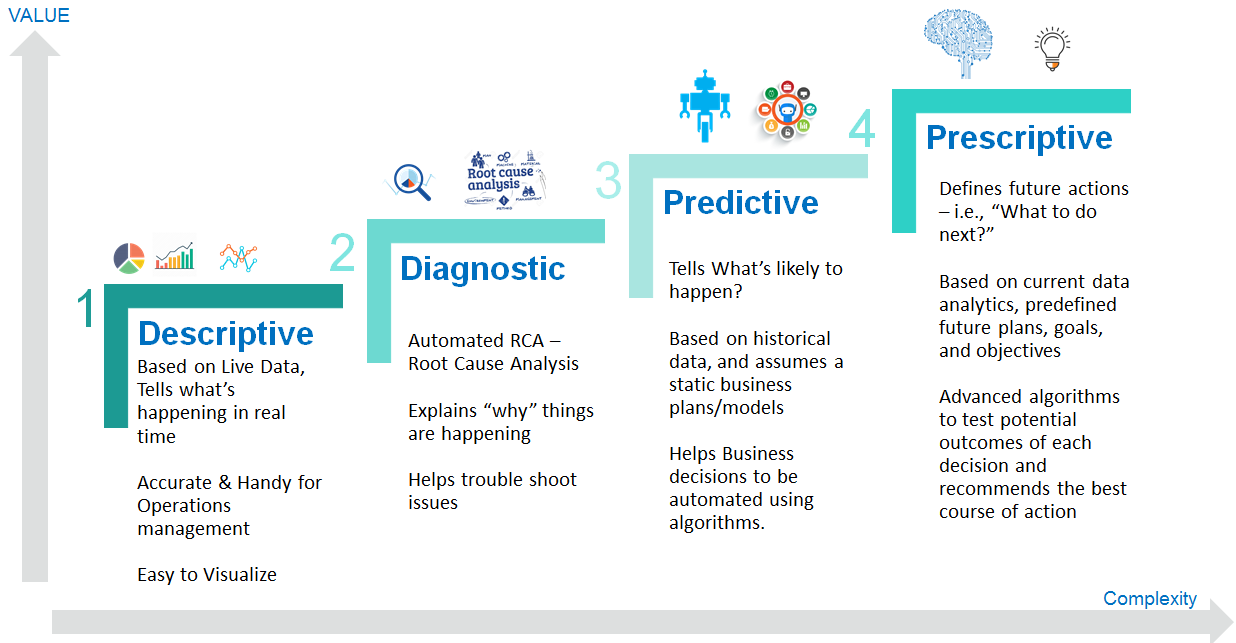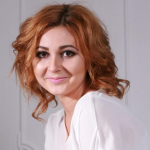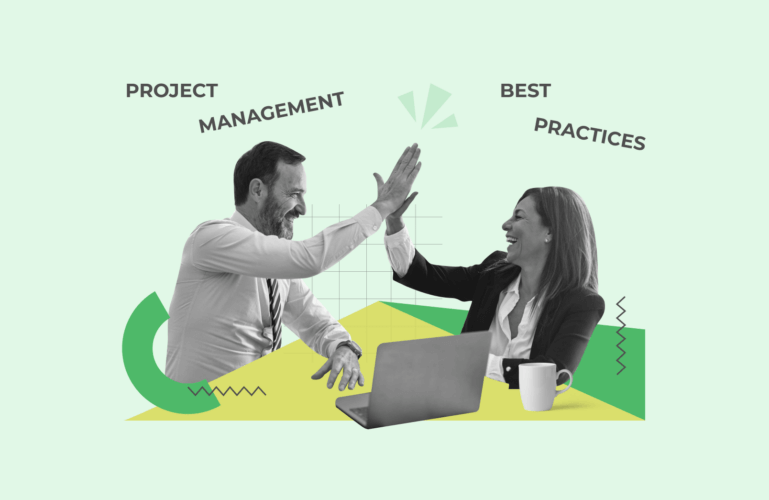The current growth dynamics and investments in SaaS are remarkable – the industry is estimated to reach $307 billion by 2026. It is a promising and competitive business worth the attention, as companies adopt SaaS solutions for a great variety of business functions.
Indeed, the SaaS industry is extensive and diverse. Here at MindK, we’ve already developed custom SaaS solutions for various industries and business needs. For instance, a hiring platform for recruitment, management systems for consulting and construction industries, member management systems for associations, and so on. Feel free to check out our case studies to see live examples of ideas turned into successful products.
The abovementioned SaaS examples show that the industry is open to all kinds of ideas. However, the rising market raises competition. On average, an emerging SaaS business is reported to have more than 9 competitors.
To help you stand out from the big boys in the SaaS world, we’ve singled out the latest trends that have a great impact on the industry. Adopting at least one of these trends can propel your SaaS idea to success and drive faster, more efficient growth of your product.
Trend 1: Rising need in remote work and e-learning
Since the start of the pandemic, millions of people all over the world have been forced to work and study from home. The video conferencing tool Zoom has seen a 224% increase in connections and a 373% jump in stock prices. The language learning app Duolingo doubled its active users in China.
For many, working from home was a great frustration. Yet, according to an IBM survey, 54% of adults would like to work remotely even after the end of the pandemic.
The prospects look even better for the e-learning industry which is expected to grow at a CAGR of over 14% by 2025. As we have already mentioned in our article about building an online learning platform, there is a great demand for online courses, language learning apps, virtual tutoring, and learning platforms. So, if you manage to find SaaS ideas that fit this niche, you will definitely have a high chance to succeed.
For example, one of our clients, for whom we developed a SaaS solution that covers the needs of communities and associations in Norway, not long ago decided to follow this trend and extend the solution with online events. We’ve implemented a powerful event management module that allows community members to sign and attend conferences, workshops, and other organization’s events online or offline.

Explore a detailed case study of the project
Trend 2: Embracing AI and machine learning
Artificial Intelligence and Machine Learning (ML) have merged into every part of today’s life. The SaaS industry is halfway through a technological revolution (in fact, we all are) – our software is learning to learn.
Amazon Echo, Google Home, Alexa, chatbots, Uber, and so forth – all benefit from Artificial Intelligence. This trend can make a good showing for your software as a service idea regardless of industry.
Let’s take an example. AppZen, a B2B SaaS company that offers auditing by means of AI. Not long ago it became the second fastest-growing SaaS company with 150% growth in the last 6 months. At the same time, Salesforce embraced AI to take a foothold as a market leader in automated CRM solutions.
So, here are a few ways AI/ML technology can brighten up your SaaS product idea:
- Chatbots and virtual assistants. It’s time to back off from lengthy sign-up forms and onboarding in favor of AI-driven chatbots and assistants.
- Dynamic pricing. Artificial Intelligence readjusts pricing in real-time according to customer behavior data, market conditions, demand, internal operations, and so on. For companies that constantly adjust their pricing for demand, these changes have a substantial positive impact on revenue growth.
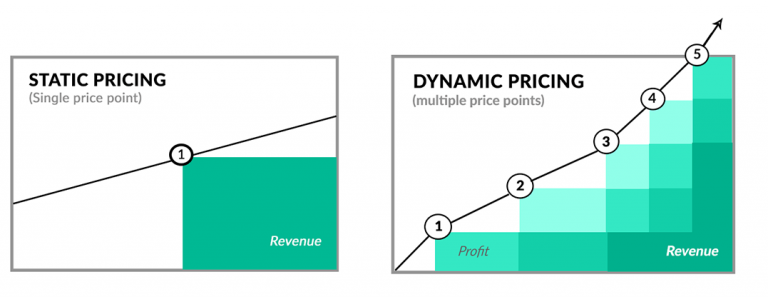
- Hyper-personalization. 89% of businesses report improved results from personalization. For instance, you can free up your customers from cluttered user interfaces (UI) with dozens of features. Instead, propose a sleek UI that takes into account the way your customer has previously used the SaaS platform.
- Cybersecurity. As the number and variety of cyberattacks exploded over the past few years, SaaS providers like Oracle began to implement AI-based systems that evolve along with security threats. Such systems can predict possible attack vectors and neutralize threats before they harm your system. Another important benefit is the scale at which AI can work to protect your SaaS business.
There are dozens of ways AI and ML can make your SaaS platform more effective and user-friendly. That’s why MindK helps US companies and healthcare organizations navigate this complex landscape with AI consulting services.
Trend 3: Introducing analytics features
As analytics and analytics tools are growing in importance and popularity, it would be wise to apply analytics functionality in your future SaaS solution. In fact, investment in analytics-centric SaaS models increased by 23.3% in 2022.
We at MindK are not surprised as we also believe that in the following years, analytics will become a key part of many service-based software platforms. Almost every SaaS solution that we developed within the walls of MindK has different data analytics functionality from illustrative dashboards to complex reports and graphs.
For example, a membership management system for associations provides a number of data-driven customized reports that help admins to track sales and find patterns in members’ activity that help them build stronger relationships with members of the association and get better results. A solution we’ve built for pension and insurance consulting suggests illustrative pension and personal insurance analytics schemes give a birds-eye view on all the calculations and help people make the right choices.
This is how data analytics helps to illustrate pension and personal insurance schemes so that everyone understands
Check out more examples of successful products built by MindK
There are different types of analytics you can apply to your SaaS solution. The main types you can consider are:
- descriptive analytics that is a simple form of analytics with a focus on summarizing data and presenting it in the most convenient and transparent way.
- diagnostic analytics which is focused on revealing the root causes of things based on the data available.
- predictive analytics with an aim to predicting future outcomes based on existing data and is used to do complex analysis dependent on the machine or deep learning.
- prescriptive analytics that is meant to define what action should be taken to eliminate a future problem.
Types of analytics
Source: medium.com
Trend 4: The integrations explosion
Integrations can turn your SaaS product into a robust omnichannel business tool. According to Massimo Pezzini, a long-time VP of Gartner Research, owning an integration infrastructure is a matter of competitive advantage for SaaS providers. He also admitted that in Gartner they have been saying for years that API (Application Programming Interface) technology and integrations are primary enablers for digital business.
Developing an Application Programming Interface gives you an opportunity to integrate your SaaS product with other vendors. As a result, your customers receive extended functionality and new features while you get a bigger audience and more potential clients.
According to the API usage survey by DevopsDigest, adoption of APIs is on the rise across all industries. Most industries have increased their usage of APIs in 2020 and keep on increasing it today.
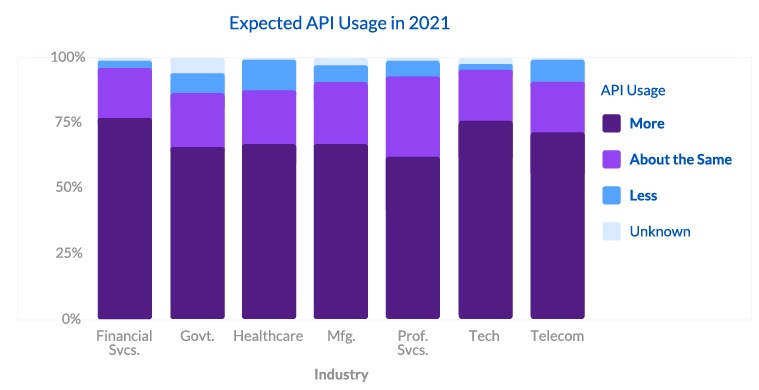
Here are a few examples of APIs adoption in action. Salesforce has an AppExchange marketplace with more than 300 partner apps that work on its platform. Expedia API gives an opportunity for third-party website users to enjoy its functionality for booking flights, cars, and hotels. eBay API allows you to place auctions on other websites, add new products for sale, and collect information about sold items.

Hence, Salesforce generates 50% of its revenue through API activity, eBay – 60%, and Expedia a whopping 90% of its revenue! An average company now uses around 137 SaaS products, so making your app integration-friendly will significantly increase its value.
In light of this, making your SaaS product integration-friendly will help to scale your business faster and boost your income. Sure, API creation and connection require time for development, but, as a rule, it doesn’t involve any ongoing costs.
Here at MindK, we use an API-first approach for almost every SaaS product we work on. Integrations are a great investment in light of data insights, product usability, and marketing. If you are interested in API development, we have a guide on how to build an API without spending a fortune and going crazy.
Trend 5: Vertical-specific SaaS software
In general, the SaaS market involves two main types of SaaS companies – vertical and horizontal. The vertical SaaS companies cover the needs of a certain industry like science, construction, healthcare, finance, and so forth. Horizontal SaaS products, on the contrary, are focused on satisfying functional needs across industries. This refers to sales, marketing, finance, accounting, managing, and so on.
You might think that focusing on a certain industry or niche market means smaller business opportunities. It doesn’t.
Most businesses have quite specific needs and will often opt for software that is designed for their industry and does one specific thing better than its competitors. Just look at such vertical SaaS companies as Veeva (a company focused on pharmaceutical and life sciences industry apps), Guidewire (platform for insurance carriers), and MindBody (business management solution for the wellness services industry), and many other products that are built for industry-specific needs. Recently, the market capitalization of Veeva increased to $35 billion, Guidewire – to $9 billion, and MindBody stayed at $1.7 billion.
Most emerging SaaS startups select a vertical-specific SaaS model as it allows them to focus on the requirements of clients in the target niche and win over the market faster.
However, it should be noted that some of these companies package their products as highly specialized APIs instead of SaaS platforms. This strategy is known as “unbundling”.
As a rule, in the case of vertical SaaS, there are fewer competitors in industries, so the early leaders tend to reign supreme. When a solution that covers the industry’s pain points enters the market, usually people can’t resist spreading their happiness. So if you focus on a certain industry or niche, you have a higher chance to expect better upsell, lower churn, and customer acquisition costs.
Trend 6: Rise of micro-SaaS
There are business spheres that are quite small, so large SaaS companies either don’t want to target them, or propose SaaS packages that are too big and expensive. Here is when micro-SaaS comes along.
By scaling down from a certain niche to certain needs, you end up with a micro-SaaS product. Micro-SaaS is a product focused on solving a specific problem in a niche market with minimal resources.
Among the benefits micro-SaaS businesses bring to the table are the ability to be location-independent, lower risks and overheads, and a higher margin.
To make it more clear, let’s take an example. Storemapper, a first-known and basic example of a micro-SaaS product, is an app that offers a basic service to a clear problem. This app can be installed on a website (with no coding involved) to create a store locator service. It is customizable with CSS and provides the ability to analyze which stores get more traffic – and that’s it. Just a useful service for a specific problem.

Sure, there are a lot more examples of micro-SaaS products almost for every sphere of our life and work: content planners, KPI trackers, social media post managers, meeting schedulers – the list may seem endless. However, even if the idea of micro-SaaS sounds simple, succeeding can be quite challenging. According to Tyler Tringas and his book on micro-SaaS to succeed “you should be five times better or five times better-performing than customers currently pay”. So, make sure your potential clients are already paying to solve the problem you are going to target.
While developing micro-SaaS, the presence of some competitors is a good sign, though too high a competition can be a sign you should think of another micro-SaaS idea.
Trend 7: SaaS pricing is more art than science
Pricing for any SaaS business is a tricky question. A well-thought-out pricing model is able to raise the income, while the wrong one can turn off potential buyers from purchasing, no matter how good the product is or how professionally it is marketed.
The bad and the good thing about pricing is that nobody knows which pricing model is the best (and don’t trust those who say they do). Pricing involves a lot of factors to consider, such as budget, size of your company, product type (and quality), the number of features you are offering, and so forth.
If one pricing model works well for one company, it does not guarantee that it will work for another. “But how to create a good pricing model then?” – you may wonder.
Some industries have certain pricing models that work well for them. We’ve already talked about it when discussing the revenue models for the education technology sphere with its Freemiums, free trials, ads-free subscription, and similar. However, the best way to come up with a profitable pricing model is to experiment with pricing to better understand the market and find the right footing for your company.
The Anatomy of SaaS pricing strategy by PriceIntelligently claims that each SaaS company should focus on continual price optimization. It means that it is not enough to review the price model once a quarter or year, it means that the company should continually experiment with pricing strategies and analyze the results.

While working on your pricing model, remember that clients really appreciate the pricing determined by the value they receive from your SaaS product. The more people use your software, the more they appreciate its value, and the higher their willingness to pay. It is called value-based pricing.
The abovementioned report by PriceIntelligently claims that value-based pricing is the best pricing strategy, compared to cost-based and competitors-based pricing. Customers do not always care about the price of your product or competitors’, but they do care about the value they’re receiving at a particular price.

Of course, working out a proper pricing model may take time and resources, however, when it is done right, it can provide more profit, increase customer satisfaction level and make your product more competitive in the market.
Trend 8: Product-led growth (PLG)
Product-led growth (or simply PLG) is a new trend that puts products at the forefront of customer acquisition as soon as possible. In short, this strategy relies on product usage as the key driver of client acquisition, conversion, and expansion.
Today, people don’t have to call the sales manager or read lengthy instructions to understand the product’s value. All they need is to try it. It is important because most enterprise users now do their own research when looking for different solutions. So, the key is to have a great product that is very easy to use.
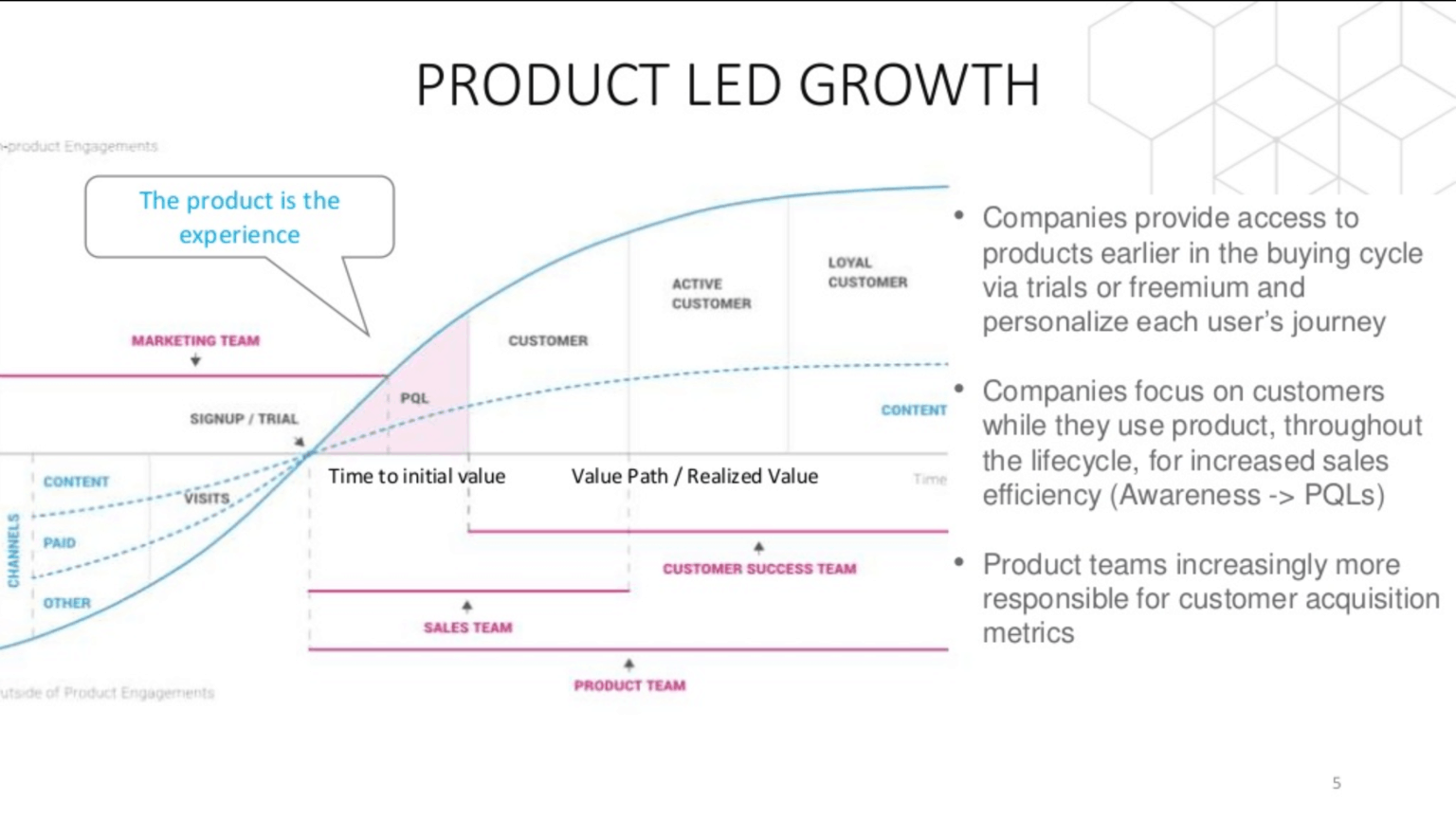
As people get value from using your product, they’ll find more ways to integrate it into their daily activities. They become ambassadors that promote your product to colleagues. And when more employees get to rely on your product, it becomes integral to the company as a whole. This is how PLG contributes to customer retention efforts.
As a bonus, PLG promotes a culture that focuses on enhancing the product to create a better and more seamless user experience.
Trend 9: Growing focus on mobile
One more factor of success for SaaS business in 2024 and beyond, is an adequate mobile experience. Most SaaS products are optimized for the desktop, but more and more customers want to interact with a product from their smartphones.
The statistics show that global web traffic from mobile devices has almost doubled since 2015.

Source: statista.com
This doesn’t mean you have to present your product to the mobile market only. In response to the increased usage of smartphones, many SaaS companies turn their focus on building the mobile version of their applications as an addition to the web-based product version. Those businesses that already have mobile apps are making some optimizations to their apps to make a seamless user experience.
Here are a few examples of mobile optimization options:
- better mobile app personalization;
- high-level data security;
- responsive mobile features like swipe-based actions, intuitive filtering, and similar;
- in-app user feedback capabilities used to make the app more convenient for users;
- and much more.
Smartphones are now a huge part of life, and should not be overlooked when developing your SaaS business idea.
It’s time to turn your SaaS idea into a working product
Now when you are aware of the current trends in the SaaS industry, it’s time to move from words to action. To join the number of successful companies and build a SaaS app, you should:
- Come up with a SaaS business idea that solves a real customer problem. If you are in search of SaaS startup ideas, then our step-by-step guide on how to generate software ideas may come in handy.
- Validate the product on the market. Test your idea within real market conditions before releasing the product (we’ve listed a number of validation options when talked about the importance of market validation).
- Do it better than others. This is the hardest part, but being on the cutting edge of new strategies and trends provides an immediate advantage.
MindK team helps companies from early startups to large enterprises develop custom solutions from scratch. We have qualified specialists able to cover end-to-end SaaS development needs from business analysis and UI/UX design to development and testing. Read more about our services and contact us to share your business idea (we respect privacy and are ready to sign an NDA agreement if required).


